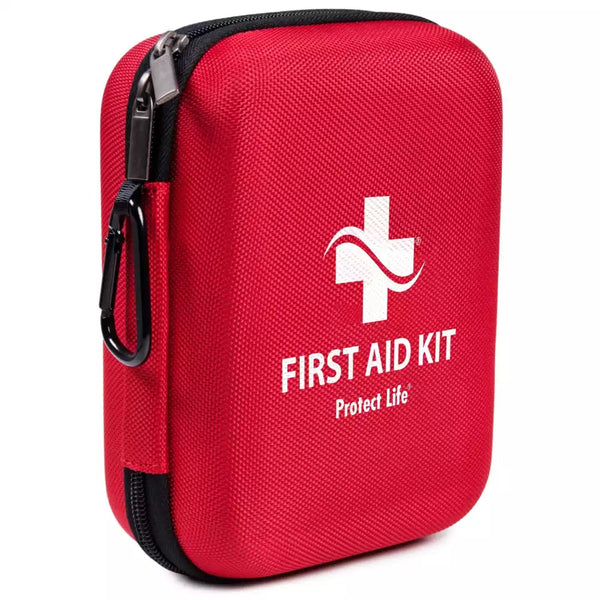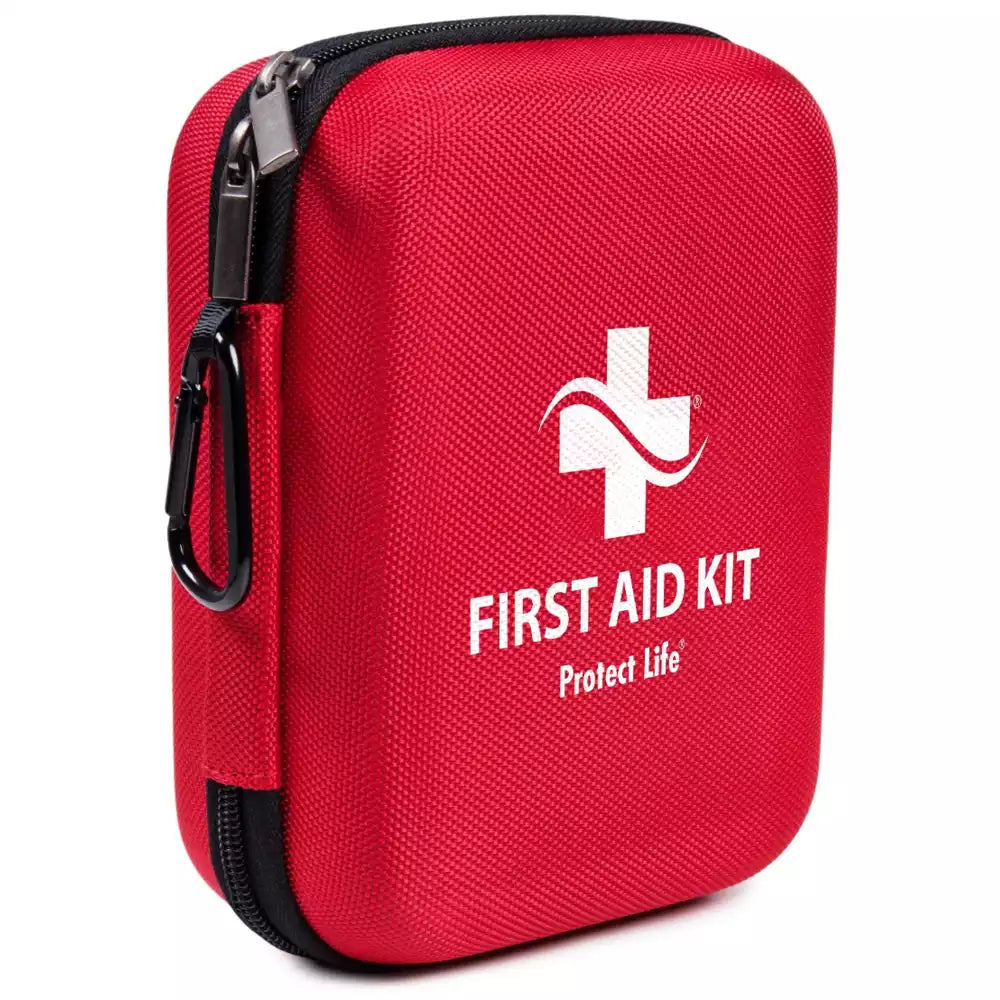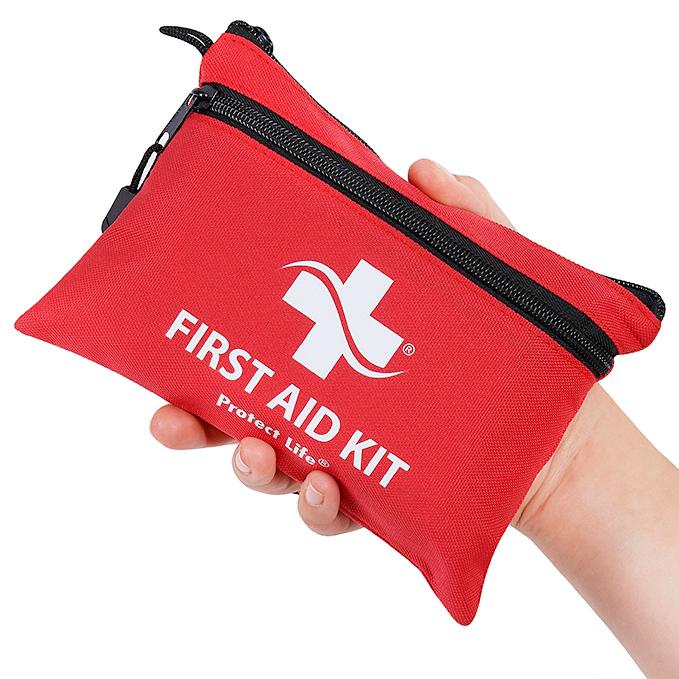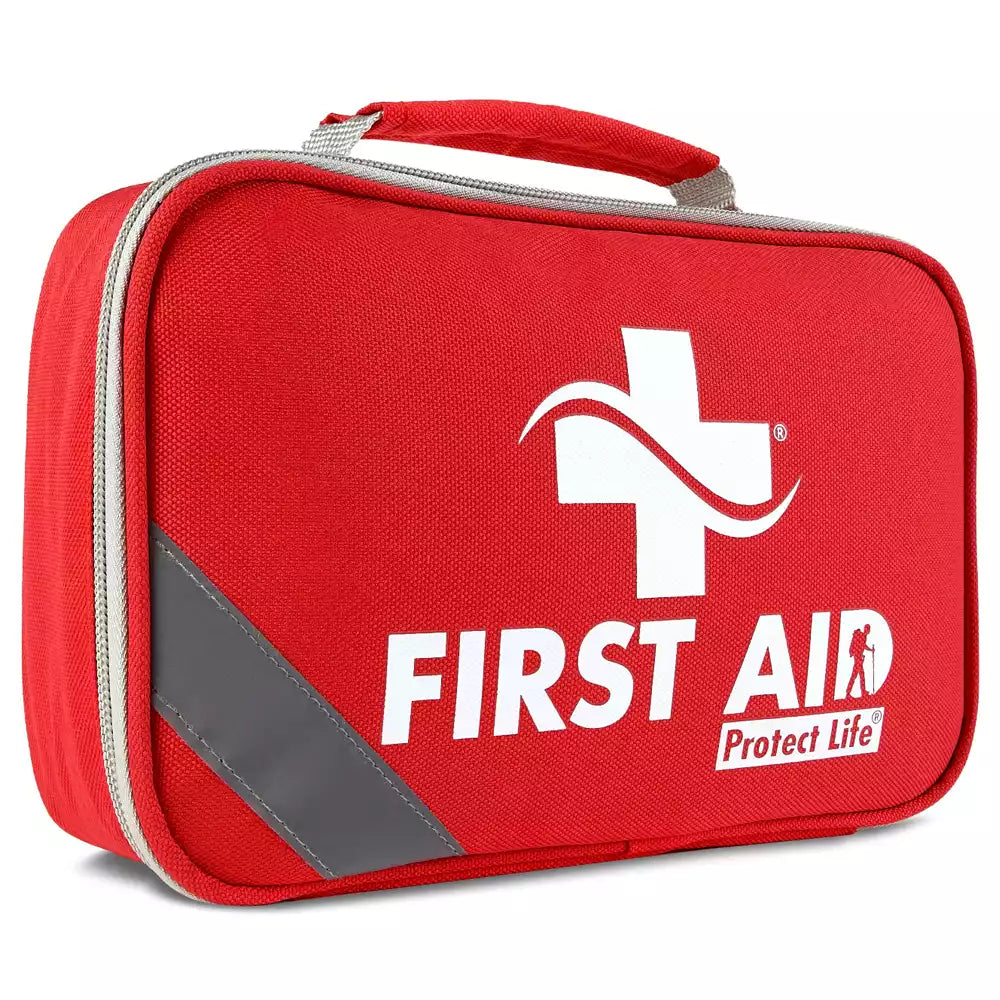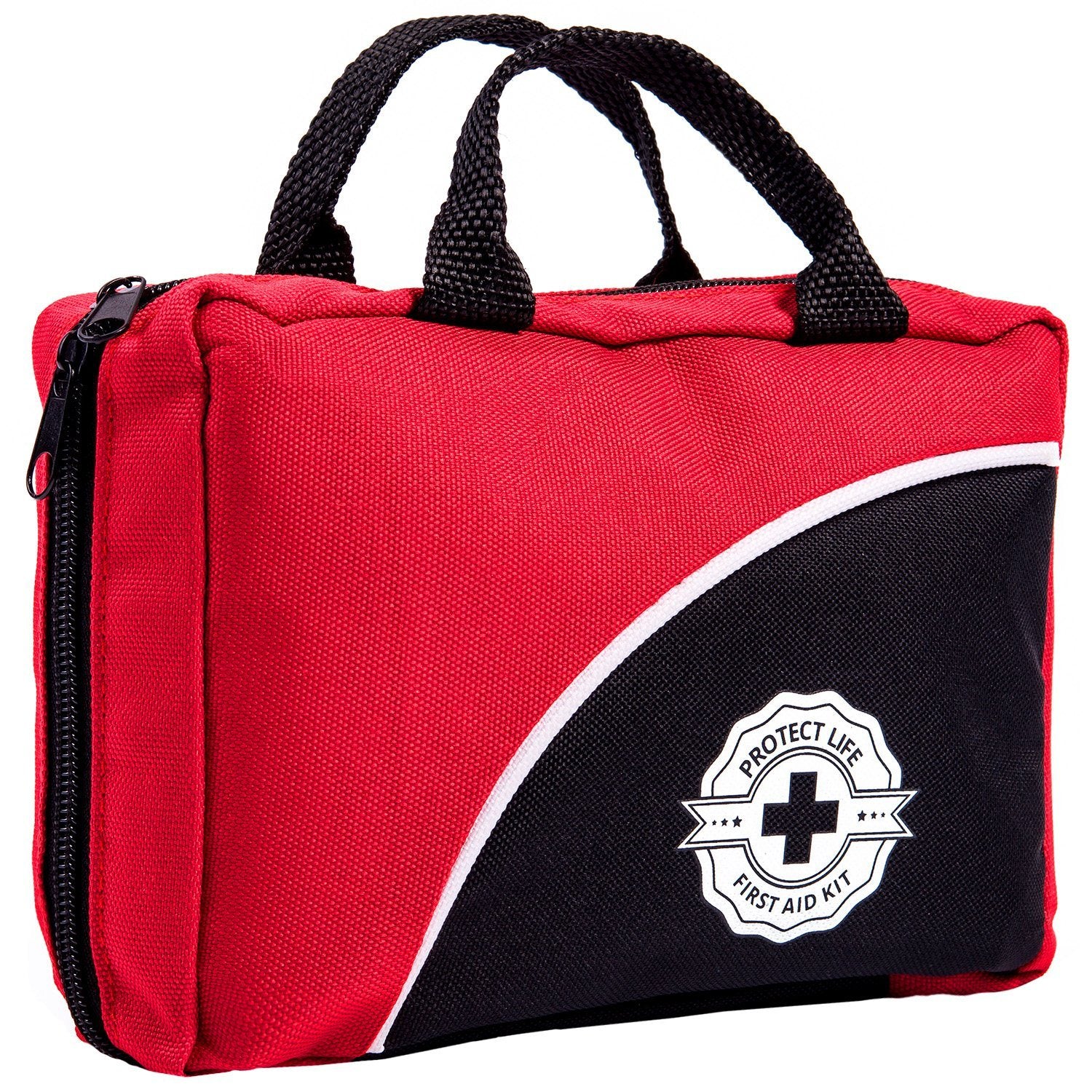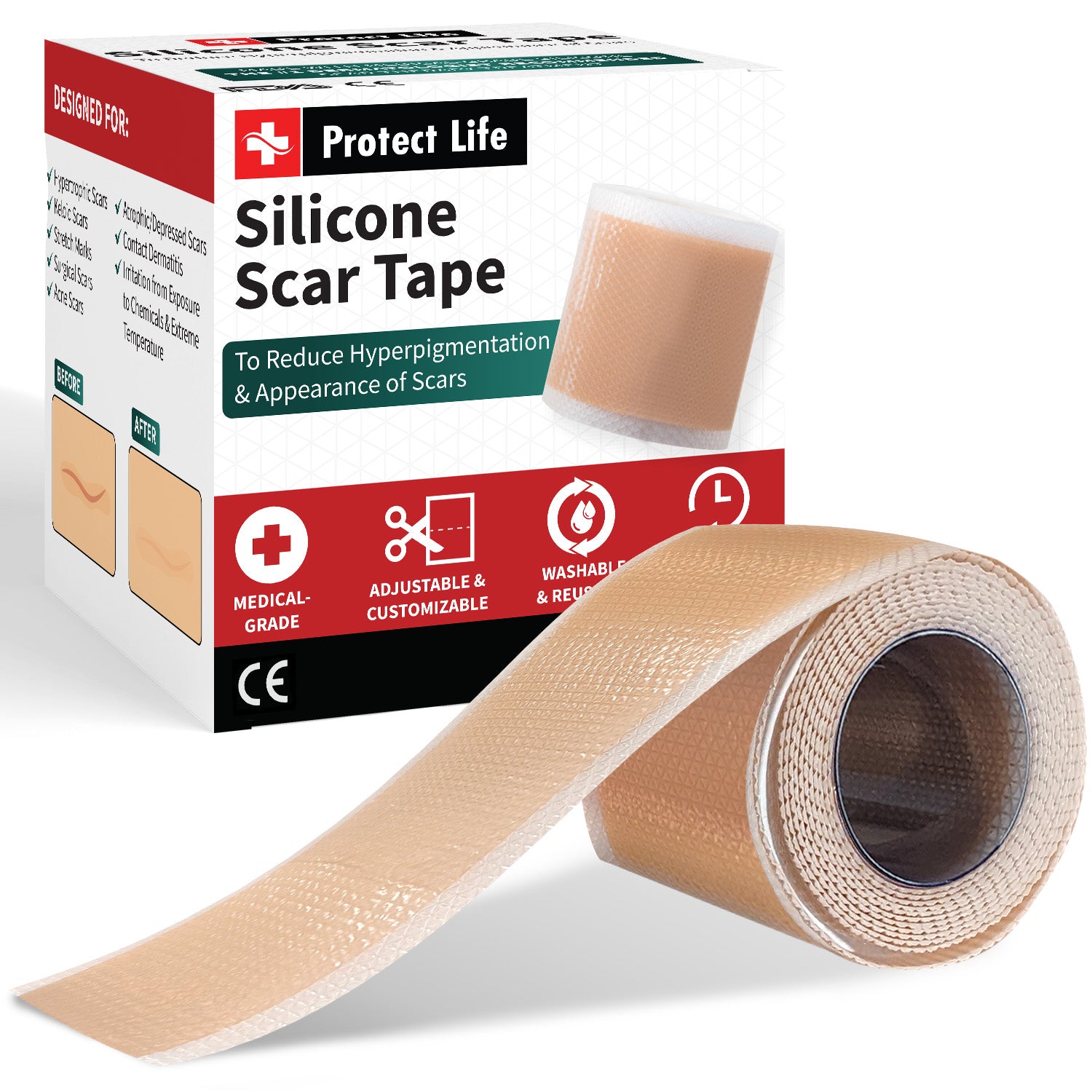Getting ready for the outdoors? Here's your ultimate camping essentials list. Don’t skimp on the basics! Pack reliable shelter, food, water, and cooking gear. Dress in layers to handle weather changes, and bring important camping essentials like a first aid kit, navigation tools, fire-starting supplies, and insect repellent. Keep reading for a comprehensive list
Table of Contents
- Camping Essentials List: Gear You Can’t Afford to Forget
- Shelter: Tents, Tarps, and Sleeping Bags
- Sleeping Bags: Staying Warm at Night
- Camping List Essentials: Food and Water
- Meal Preparation and Cooking
- Water and Hydration
- Clothing: Essential Gear for All Weather Conditions
- Footwear: Choosing the Right Pair
- Fire and Light: Tools for Heat and Visibility
- First Aid Kit
- Navigation Tools: Compass, Maps, and GPS
- Multi-Tool or Knife
- Emergency Blanket
- Insect Repellent and Sunscreen
- Camping Hygiene
- Camping Chair or Hammock
- Backup Power: Solar Chargers and Power Banks
- Personal Items: Documents and Identification
- Why You Shouldn’t Skimp on Safety
- Camping Essentials List: Prepare Well, Camp Safely
There’s nothing quite like the great outdoors—the fresh air, the beauty of nature, and the chance to unplug from everyday life. Whether you’re an experienced camper or a first-timer, it’s essential to be prepared for whatever the wilderness throws your way. Packing the right gear can make or break your trip, remember that what you take with you is not just about comfort and convenience on the trail—it’s also about safety.

This camping essentials list will help you gear up for your next adventure with everything you need. We’ll cover everything from the basics like shelter, food, and clothing to important safety items and why they’re necessary for outdoor trips.
List of Camping Essentials: Gear You Can’t Afford to Forget
Let's start with a comprehensive list of camping essentials you need to bring along to ensure a successful and safe camping experience.
Shelter: Tents, Tarps, and Sleeping Bags
One of the most important items on any camping essentials list is your shelter. Your tent or tarp will be your home away from home, protecting you from the elements like wind, rain, and the sun. Whether you're camping in the summer, spring, or fall, choosing the right tent can make a huge difference in your comfort and safety.
When selecting a tent, it’s important to consider not only the number of people in your group but also the season and terrain of your camping destination. A tent designed for warm-weather camping might not be suitable for higher elevations or unpredictable weather conditions. For example, if you're camping in a place where it’s likely to rain, you’ll need a tent that’s waterproof and well-ventilated to prevent condensation buildup inside. In cold or windy environments, a well-constructed tent can protect you from exposure, which is key for staying warm and avoiding hypothermia.
A tent is more than just a shelter from the rain or sun—it's your secure basecamp. It provides privacy, keeps out insects, and helps you organize your gear in a tidy, dry environment.
Key Tent Tips
- Opt for waterproof tents with solid construction: Look for tents made from durable, waterproof materials like ripstop nylon or polyester. Seams should be taped or sealed to prevent water from seeping in during heavy rain. A waterproof rating of at least 1500 mm is recommended for moderate rain, while a rating of 3000 mm or higher is better for more extreme conditions.
- Make sure to bring a rainfly for unexpected showers: A rainfly is a protective cover that fits over your tent, adding an extra layer of protection against moisture. Even if the weather forecast looks clear, it’s always a good idea to bring the rainfly to avoid getting caught unprepared in a sudden storm.
- Don’t forget extra stakes and a repair kit: It’s easy to lose or bend tent stakes while setting up camp, especially if the ground is rocky. Bringing a few extras can save you a lot of frustration. A repair kit with patches and adhesive will allow you to fix small rips or leaks quickly, ensuring your shelter remains secure.
In addition to your tent, tarps are also a great tool to have on your list of camping essentials. A tarp can be strung above your tent for additional rain protection, used as a ground cover to prevent moisture from seeping into your tent, or set up as a separate shelter over a picnic table or sitting area.
Sleeping Bags: Staying Warm at Night
Once you’ve set up your tent or shelter, your sleeping arrangement is the next key factor in staying comfortable. It’s easy to underestimate how cold it can get at night, even in the summer. Temperatures can plummet after dark, especially in higher elevations or open areas, leaving you shivering if you’re not prepared.
Choosing the right sleeping bag is essential for getting a good night’s sleep and maintaining your energy levels during your trip. A poorly insulated or improperly rated bag can leave you uncomfortably cold, which not only impacts your rest but can also put you at risk of hypothermia in more extreme environments.
Key Sleeping Bag Tips
- Choose a sleeping bag rated for colder temperatures than expected: Most sleeping bags come with temperature ratings, which indicate the lowest temperature the bag will keep you warm in. As a general rule, choose a bag rated for temperatures at least 10 degrees colder than what you expect at night. This gives you a buffer in case the temperature drops unexpectedly.
- Types of sleeping bags: Mummy-style sleeping bags are popular for colder climates because they conform more closely to your body, minimizing heat loss. Rectangular sleeping bags offer more room to move around but are generally less efficient at trapping heat.
- Use sleeping pads for added insulation: A sleeping pad not only adds comfort by providing cushioning between you and the ground but also offers critical insulation to keep you warm. The ground can sap heat from your body, so a high-R-value sleeping pad (which measures insulation) is essential, especially in colder environments.
For milder weather, a lightweight sleeping bag or even a sleeping blanket might suffice, but it’s always better to err on the side of caution. The last thing you want is to spend the night cold and uncomfortable when you should be resting for the next day’s adventures.
By including a high-quality tent, a durable rainfly, extra stakes, and a well-insulated sleeping bag on your camping list essentials, you’ll be ready to handle the elements and enjoy a peaceful night under the stars.
Camping List Essentials: Food and Water
Food and water are just as important as shelter. Proper nutrition will keep your energy up, especially if you plan to hike, swim, or engage in other physically demanding activities. Planning your meals in advance and packing the right food will help you stay nourished but also make your camping experience more enjoyable.
Food Essentials
When selecting food for camping, it’s important to focus on items that are easy to pack, won’t spoil, and provide the necessary nutrients to fuel your body throughout your trip. Since you may not have access to a refrigerator or kitchen facilities, non-perishable and lightweight options are your best bet. Additionally, you’ll want to consider the ease of preparation. Ideally, you want food that requires minimal cooking effort but still tastes good and provides you with enough energy to get through your activities.
Key Food Items to Bring
- Canned foods: Canned beans, soups, chili, and even fruits are great staples. They have a long shelf life, are nutrient-dense, and don’t require refrigeration. Canned fish or meat, like tuna, chicken, or salmon, can add essential protein to your meals.
- Dried fruits and nuts: These are lightweight and provide a great mix of carbohydrates, healthy fats, and proteins. Dried fruits like apricots, raisins, and apple slices give you quick energy, while nuts such as almonds and walnuts offer sustaining fats and protein.
- Instant noodles, pasta, and rice: These are quick and easy to prepare, making them excellent for camping. Instant noodles can be cooked in just a few minutes with hot water, while pasta and rice can form the base of a hearty meal when combined with canned vegetables or sauces.
- Energy bars and protein snacks: Look for bars that offer a good balance of carbohydrates and protein. They’re compact, easy to carry, and perfect for quick energy during hikes or between meals.
Meal Preparation and Cooking
When it comes to cooking while camping, simplicity is key. You won’t have access to a full kitchen, so it’s important to bring the right gear for outdoor meal preparation. Many campers opt for portable camp stoves, which are lightweight and easy to set up, or you can rely on a good old-fashioned campfire if it’s allowed in your location. Either way, you'll need the right tools to cook your meals safely and efficiently.
Essential Cookware and Tools
- Portable camp stove: A small propane or butane stove is a great option for cooking quickly, especially when you’re camping in areas where open fires are restricted. These stoves are lightweight and typically come with one or two burners. Always remember to bring extra fuel canisters.
- Cookware: Bring lightweight pots and pans that are durable and easy to clean. Stainless steel, cast iron, or aluminum options work well. Opt for collapsible cookware to save space in your backpack or car.
- Utensils: Don’t forget reusable utensils, such as forks, knives, and spoons. A spork is a great multi-use tool. Tongs, a spatula, and a knife are also essential for food prep and serving.
- Plates, bowls, and cups: Opt for sturdy, reusable options like metal or hard plastic. These will last longer than disposable options and are more environmentally friendly.
- Fire-starting tools: If you’re planning to cook over an open fire, you’ll need waterproof matches, a lighter, or fire starters, as well as wood or charcoal if it's not available on-site.
- Cooler: For shorter trips, a cooler is a great way to keep perishable items fresh for the first day or two. Make sure to pack it with ice packs to extend its cooling capacity.
You’ll also want to bring items for cleaning up, such as biodegradable soap, a scrub brush, and a small towel to dry your cookware. Ensure all food waste is properly packed out or disposed of to prevent attracting wildlife.
Sample Camping Meals
- Breakfast: Oatmeal with dried fruits and nuts, or scrambled eggs with canned veggies if you have a cooler. Instant coffee or tea for a warm start.
- Lunch: Tuna wraps using canned tuna, tortillas, and a packet of mayonnaise. Add sliced cucumbers or bell peppers for crunch.
- Dinner: Pasta with canned tomato sauce, or rice cooked over a camp stove with canned beans and spices for a simple, filling meal.
Water and Hydration
Water is one of the most critical items on your camping list essentials. Safe drinking water is non-negotiable. If you're camping in a location without easy access to clean water, you'll need to plan ahead and either bring enough water with you or be prepared to purify water from natural sources like rivers, lakes, or streams.
A general guideline is to bring at least one gallon of water per person, per day. This amount covers both drinking and basic cooking needs. However, if you’ll be engaging in strenuous activities like hiking or if you're camping in a hot climate, you may need to bring more to stay hydrated.
If you're camping for an extended period or don’t want to carry all your water, you’ll need to have a method of purifying natural water sources. Water from lakes, rivers, and streams can contain bacteria, parasites, and other contaminants that can make you sick if consumed untreated.
Water Purification Options
- Water filter: Portable water filters are a lightweight and effective option for purifying water from natural sources. Look for a filter with a small pore size that can remove bacteria, protozoa, and other contaminants.
- Water purification tablets: These tablets are easy to carry and use, making them ideal for longer camping trips. They kill bacteria and viruses, making water safe to drink, though you’ll want to wait at least 30 minutes for the tablets to take effect.
- Boiling water: If you have access to a fire or stove, boiling water for at least 3-5 minutes is one of the safest ways to kill harmful organisms. However, this method requires fuel and time, so it’s not always practical if you're in a hurry.
- UV water purifiers: These battery-operated devices use ultraviolet light to kill bacteria, viruses, and parasites. They’re effective but require charged batteries, so be sure to bring extras or a power source.
Staying hydrated while camping is essential, especially if you’re hiking or spending long hours in the sun. Dehydration can lead to headaches, dizziness, and fatigue, and in extreme cases, can become life-threatening. Be sure to drink water regularly, even if you don’t feel thirsty.
Pro Tip: Carry a reusable water bottle or hydration bladder to stay hydrated on the go. Camelback-style hydration packs are popular for hikes since they allow you to drink hands-free.
Clothing: Essential Gear for All Weather Conditions
When you're out in the wilderness, the weather can change quickly, turning what was a pleasant day into a cold, rainy, or windy ordeal. Proper clothing can be the difference between an enjoyable experience and a miserable one. Whether it’s a sudden downpour, a drop in temperature at night, or just the wear and tear from hiking, having the right clothing is essential. When packing, always consider the climate and weather forecast of your destination, but also be prepared for unexpected changes. Dressing in layers is key, as it allows you to easily adapt to changing temperatures throughout the day and night.
The Layering System
A tried-and-true method for outdoor activities like camping is the layering system. By dressing in layers, you can add or remove clothing to regulate your body temperature based on the environment.
-
Base Layer: The base layer sits directly against your skin and is responsible for wicking moisture (sweat) away from your body to keep you dry and comfortable. This is crucial because if moisture stays on your skin, it can make you feel cold, especially when the temperature drops in the evening. Opt for moisture-wicking materials like synthetic fibers (polyester or nylon) or merino wool, which are designed to pull moisture away from your skin. Avoid cotton, as it retains moisture and can leave you feeling damp and chilled.
-
Insulating Layer: This is the layer that keeps you warm by trapping body heat. Fleece, down, or synthetic insulated jackets work well in colder conditions. If you're camping in an area where temperatures drop significantly at night, having a good mid-layer is essential. Look for jackets or sweaters that are lightweight yet warm, so they don’t take up too much space in your pack. Down jackets offer excellent warmth-to-weight ratios, but they lose insulation if they get wet. Synthetic options like PrimaLoft stay warm even when damp.
-
Outer Layer (Shell): The outer layer is your protection from the elements, including wind, rain, and snow. A waterproof and windproof jacket is a must-have for any camping trip. Choose a jacket made from breathable materials like Gore-Tex or eVent, which allow moisture (sweat) to escape while keeping rain out. Make sure your jacket has sealed seams to prevent water from leaking in during heavy downpours. Pants made from similar waterproof material are just as important to keep your legs dry and comfortable.
Essential Clothing Items for Any Trip
-
Moisture-Wicking Base Layers: As mentioned, the base layer is critical for managing sweat and staying dry. Pack both short- and long-sleeved options depending on the weather forecast. For cooler nights, long underwear made from merino wool or synthetic material can provide an extra layer of warmth while keeping you dry.
-
Waterproof Jacket and Pants: A reliable rain jacket and pants are essential. Even if the forecast calls for clear skies, weather in the wilderness can be unpredictable. A good rain jacket and pants not only protect you from getting soaked but also act as a windbreaker in blustery conditions. Many waterproof jackets are lightweight and pack down small, making them easy to carry without taking up too much room in your gear. Look for jackets with adjustable hoods, cuffs, and waistbands to ensure a snug fit when the weather turns harsh.
-
Insulating Layers: For colder weather or evening camping, pack a warm fleece, down jacket, or a synthetic alternative. Lightweight but warm options are best, as they don’t add too much bulk to your pack but can provide serious warmth when temperatures dip.
-
Sturdy Hiking Boots or Shoes: Your footwear can make or break your trip, especially if you’re hiking on rough or uneven terrain. A good pair of hiking boots or trail shoes should provide ankle support, traction, and comfort for long walks. If you’re hiking through wet areas, consider waterproof boots. Breaking in your boots before the trip is a must to avoid blisters, which can be painful and seriously affect your enjoyment.
-
Warm Socks, Hats, and Gloves: Socks are often overlooked, but a good pair of wool socks can keep your feet dry and warm, even in cold or wet conditions. Wool is naturally moisture-wicking and provides insulation even when wet. Pack extra pairs and consider a thicker option for sleeping in colder weather. Hats and gloves are also essential for cold mornings and evenings. A wool beanie or fleece hat can help retain heat from your head, while lightweight gloves are useful for keeping your hands warm when the temperature drops. Gloves made from windproof or water-resistant materials are especially useful in colder climates.
Footwear: Choosing the Right Pair
Camping often involves a lot of walking, whether you’re hiking on trails, gathering firewood, or just exploring your surroundings. Therefore, your footwear is one of the most important things to consider. Sturdy hiking boots are recommended for most terrains, especially if you plan on tackling rugged or rocky paths. If you're camping in a warmer climate or primarily sticking to flat, dry ground, trail shoes or lighter hiking shoes can be a good alternative.
Features to Look for in Hiking Boots or Shoes:
- Ankle support: If you’ll be walking on uneven ground, boots with higher tops that support your ankles can help prevent injuries like sprains.
- Waterproofing: Many boots come with waterproof linings to keep your feet dry in wet conditions. Even if you’re not expecting rain, it’s a good idea to wear waterproof boots, especially if you’ll be crossing streams or walking through wet grass.
- Breathability: Look for boots that offer good ventilation, so your feet don’t get too sweaty, which can lead to blisters. Boots with Gore-Tex linings are breathable and waterproof, making them an excellent all-around option.
Tips for Choosing and Preparing Your Gear
-
Check the Weather Forecast: Always check the forecast before you leave, but remember that weather can change quickly in certain areas, especially in mountains or coastal regions. Even if it looks like the weather will be mild, bring layers and waterproof gear just in case.
-
Test Your Gear: It’s important to try on your clothing and boots before your trip. Make sure that everything fits properly and is comfortable. Break in your boots on a few hikes before camping to avoid blisters.
-
Pack Extra Layers: Even if it’s warm during the day, temperatures can drop significantly at night, especially in desert or mountainous regions. Having extra layers in your pack ensures that you’re ready for cooler weather after the sun goes down.
-
Keep Your Gear Dry: Pack your extra clothing in waterproof bags or dry sacks to protect it from moisture. This ensures that you’ll always have dry clothes, even if the weather turns wet.
By preparing with the right layers and packing the appropriate clothing for a variety of conditions, you’ll be ready for whatever weather comes your way, making your trip more comfortable and enjoyable.
Fire and Light: Tools for Heat and Visibility
Campfires are central to the camping experience, but you'll also need a reliable way to start one, especially in damp or windy conditions. Always carry more than one fire-starting method, such as waterproof matches, lighters, and fire starters.
Lighting: Once the sun sets, you'll need a way to light your campsite. Lanterns, headlamps, and flashlights are all great options, and you should bring extra batteries as a backup.
List of What to Bring Camping: Don’t Forget a First Aid Kit

No matter how carefully you plan your trip, accidents can happen in the wild. In fact, studies show that 43% of campers experience minor injuries, like cuts, scrapes, or burns. Having a first aid kit on hand is absolutely essential, especially when you’re far from immediate medical help.
Why You Need a First Aid Kit
- Cuts and scrapes: These are the most common injuries while camping, often from falls or using sharp tools. Without proper care, small wounds can become infected.
- Burns: Campfires, cooking, and outdoor stoves pose burn risks. A kit stocked with burn creams and bandages is critical for treating these injuries immediately.
- Blisters: A common complaint from hiking long distances, blisters can easily sideline your trip without proper treatment.
What Should Be in Your First Aid Kit
- Adhesive bandages of various sizes
- Gauze pads and adhesive tape
- Antiseptic wipes and antibiotic ointment
- Burn cream
- Tweezers and scissors
- Elastic bandages for sprains
With Protect Life First Aid Kits, you’re covered for all the most common camping injuries, plus many unexpected ones. Their kits are compact, durable, and easy to pack, making them the perfect addition to your list of camping essentials.
Navigation Tools: Compass, Maps, and GPS
Getting lost in the wilderness is easier than you might think. Even seasoned campers can lose their way without proper navigation tools. While smartphones offer GPS, you shouldn’t rely on them solely because batteries can die and signal can be unreliable in remote areas.
Navigation Essentials
- Compass and a physical map of the area
- Portable GPS device or watch
- Extra batteries or a power bank for electronics
According to the U.S. Forest Service, approximately 7% of all search-and-rescue missions in national parks are for lost or disoriented campers. Having navigation tools can make all the difference.
Multi-Tool or Knife: Your Swiss Army Companion
A multi-tool is a must for any camping trip. Whether you need to cut rope, prepare food, or fix gear, a sturdy knife or multi-tool will come in handy. Look for a tool that includes pliers, scissors, and screwdrivers, as well.
Emergency Blanket: Protection Against the Elements
An emergency blanket or bivvy sack can protect you from hypothermia if temperatures drop unexpectedly. They are lightweight and compact but can reflect up to 90% of your body heat, making them an essential addition to any first aid or survival kit.
According to the National Park Service, hypothermia can occur even in temperatures as high as 50°F if you're wet and unprepared. Adding an emergency blanket to your gear could literally be a life-saver.
Insect Repellent and Sunscreen: Protecting Your Skin
One of the downsides of camping is dealing with pests like mosquitoes and ticks. Both can carry diseases such as Lyme disease and West Nile Virus, so it’s crucial to protect yourself with insect repellent.
Sunscreen: Even on cloudy days, the sun’s rays can still cause sunburn. Be sure to pack broad-spectrum sunscreen with an SPF of 30 or higher, and remember to reapply throughout the day.
Camping Hygiene: Stay Clean in the Wild
Camping doesn’t mean you have to give up all hygiene. Basic toiletries such as biodegradable soap, toilet paper, and hand sanitizer will help keep you clean and reduce the risk of illness.
Waste Disposal: Leave no trace by packing out all trash and waste. Bring plastic bags for garbage and invest in a portable shovel for burying human waste if you’re camping in the backcountry.
Camping Chair or Hammock: Comfort Around the Fire
While not an essential for survival, having a camping chair or hammock adds a level of comfort to your trip. After a long day of hiking, it’s nice to have a place to relax by the fire.
Backup Power: Solar Chargers and Power Banks
You may want to disconnect while camping, but that doesn’t mean you should leave all your tech behind. Having a solar charger or power bank ensures your devices are ready for emergencies.
A good rule of thumb is to always keep a fully charged power bank for your phone, flashlight, or GPS, just in case.
Personal Items: Documents and Identification
Before you head out, make sure you have important personal items such as your ID, insurance card, and any permits required for the area you’re camping in. Keep these in a waterproof bag to protect them from the elements.
Why You Shouldn’t Skimp on Safety
As we've seen from the statistics and common camping injuries, safety should always be your top priority when heading into the wilderness. Over 25% of campers report being unprepared for emergencies during their trips, which can turn a fun adventure into a stressful ordeal.
A Protect Life First Aid Kit is one of the smartest investments you can make for your trip. It’s lightweight, compact, and designed specifically for outdoor use, with medical supplies to treat everything from minor cuts to more serious injuries like burns or sprains.
Camping Essentials List: Prepare Well, Camp Safely
When preparing for your next outdoor trip, it’s essential to use a comprehensive camping essentials list to make sure nothing is forgotten. From shelter to food, fire, and safety, every item plays a role in ensuring your trip is both enjoyable and safe.
However, the most important item on your camping list essentials is a reliable first aid kit. Protect Life First Aid Kits have everything you need to handle common camping injuries, giving you peace of mind no matter how far off the grid you go. By preparing well, you’ll not only have a great time camping, but you’ll also stay safe and ready for any challenge that comes your way.

